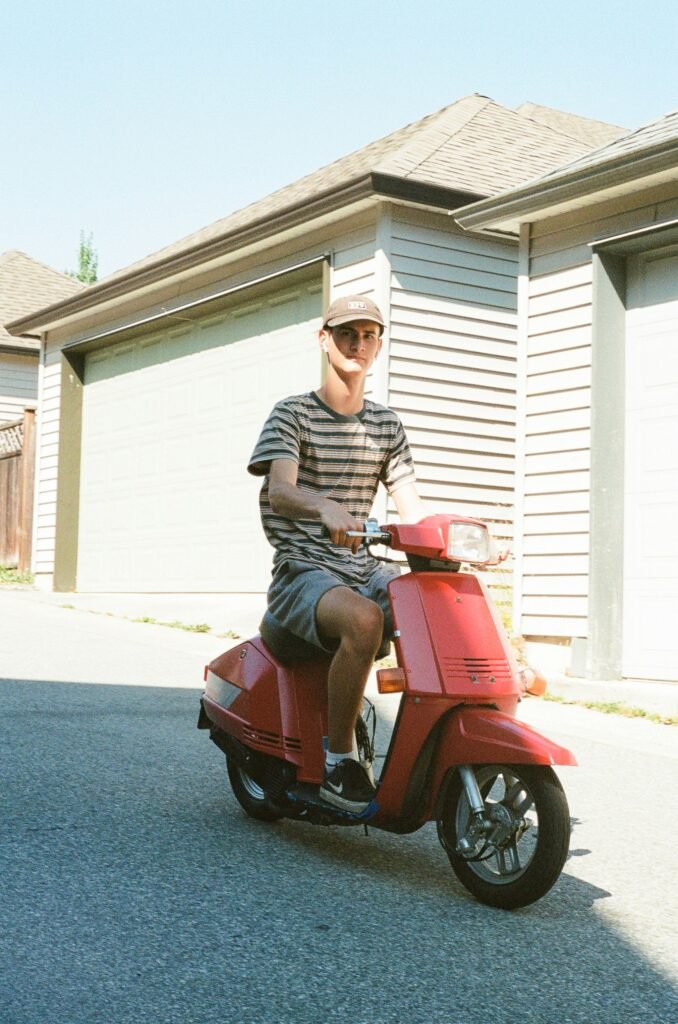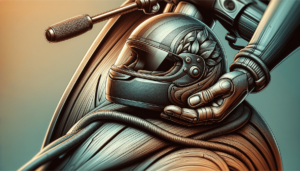
Whether your child has just received a brand new scooter or has been riding one for a while now, it’s crucial to prioritize their safety. With the popularity of children’s scooters on the rise, it’s essential to be aware of the potential risks and how to prevent any accidents. In this article, you will find a comprehensive list of important safety guidelines for children’s scooters that will help keep your little one safe while they have a blast zooming around the neighborhood. From wearing protective gear to checking the scooter’s condition regularly, these guidelines will ensure a fun and secure experience for your child.

This image is property of images.unsplash.com.
Check out our product reviews!
Choosing the Right Scooter
When it comes to choosing the right scooter for your child, there are a few factors to consider. First and foremost, it is important to look at the age and weight recommendations provided by the manufacturer. These recommendations take into account the size and capabilities of the scooter, ensuring that your child can safely handle it. By choosing a scooter that is appropriate for their age and weight, you are taking a step towards ensuring their safety.
Another important consideration is the size and height of the scooter. It is essential that the scooter be the right size for your child, as one that is too big or too small can make it more difficult for them to control. When your child stands next to the scooter, their feet should be able to comfortably touch the ground, allowing them to maintain balance and stability while riding.
Additionally, checking for safety certifications is crucial. Look for scooters that have been approved by reputable organizations, such as the Consumer Product Safety Commission (CPSC) or ASTM International. These certifications confirm that the scooter has undergone rigorous testing and meets safety standards. By choosing a scooter with proper safety certifications, you can have peace of mind knowing that it has been manufactured to the highest safety standards.
Wearing Protective Gear
No matter how experienced or skilled your child is at riding a scooter, it is important to always prioritize safety by wearing protective gear. The most essential piece of protective gear is a helmet. Look for a helmet that fits properly and is certified for scooter or bike use. The helmet should sit level on your child’s head, covering their forehead, and the straps should be securely fastened under their chin.
In addition to a helmet, knee and elbow pads are highly recommended. These pads provide extra protection in the event of a fall or collision, helping to prevent serious injuries to these vulnerable areas. Make sure the knee and elbow pads fit properly and are securely fastened so they don’t slide or shift during use.
Lastly, wearing closed-toe shoes is essential when riding a scooter. This helps protect your child’s feet from any potential injuries, such as scrapes or cuts. Closed-toe shoes provide better grip on the scooter deck, reducing the risk of slipping or losing control while riding.

This image is property of images.unsplash.com.
Check out our product reviews!
Inspecting the Scooter
Before your child gets on their scooter, it is important to thoroughly inspect it for any loose or broken parts. Check the handlebars, wheels, and deck for any signs of damage or instability. If anything is loose or broken, it should be repaired or replaced before allowing your child to ride the scooter.
Ensuring the proper functioning of brakes is also crucial for your child’s safety. Test the brakes to make sure they are working effectively and can bring the scooter to a complete stop when needed. If the brakes are not functioning properly, have them repaired by a professional before allowing your child to use the scooter.
The stability of the handlebars is another important factor to consider. Make sure the handlebars are securely fastened and do not wobble or slip during use. If there are any issues with the handlebar stability, have it inspected and repaired before allowing your child to ride the scooter.
Scooting in Safe Areas
Choosing the right location to ride a scooter is essential for your child’s safety. Always select smooth and even surfaces, such as sidewalks or paved paths, for them to ride on. Avoid rough or uneven terrain, as it can make it more difficult for your child to maintain control of the scooter.
When selecting a riding location, it is important to avoid crowded sidewalks and busy streets. These areas can be hazardous and increase the risk of accidents or collisions with pedestrians or vehicles. Instead, opt for quieter areas with less traffic, such as parks or residential streets, where your child can ride safely.
Driveways and intersections are particularly risky areas for scooter riders. Teach your child to be cautious when approaching these areas and to look out for any vehicles that may be entering or exiting. Encourage them to stop and look both ways before proceeding to ensure they can cross safely.

This image is property of images.unsplash.com.
Teaching Proper Riding Techniques
To ensure your child’s safety while riding a scooter, it is important to teach them proper riding techniques. Emphasize the importance of keeping both feet on the scooter while riding, as taking one foot off can affect their balance and increase the risk of falling.
Maintaining a balanced and upright position is also essential. Teach your child to stand with their feet shoulder-width apart and their knees slightly bent, allowing for better stability and control. Encourage them to keep their body centered over the scooter to help maintain balance.
Using the hand grips for steering is another important technique to teach your child. Emphasize the importance of holding onto the handlebars and using them to guide the scooter. Encourage them to keep a firm grip on the handles and to avoid excessive or sudden movements that could affect their control.
Being Aware of Surroundings
When riding a scooter, it is crucial for your child to be aware of their surroundings at all times. Teach them to look out for obstacles, such as rocks, sticks, or uneven pavement, that could cause them to lose balance or fall. Encourage them to scan the environment regularly to spot potential hazards and adjust their path accordingly.
Being mindful of other pedestrians is also important. Teach your child to be considerate and respectful of others sharing the same space. Encourage them to yield to pedestrians and to give them plenty of space when passing by.
Additionally, practicing scanning the environment can greatly enhance your child’s safety. Teach them to constantly scan the path ahead as well as the sides and rear to be aware of any potential dangers or approaching vehicles. This will help them anticipate and react to any potential hazards.
Following Traffic Rules
Even though scooters are primarily used by children, it is important that they understand and follow basic traffic rules. Teach your child to observe traffic signs and signals, just as they would if they were walking or biking. This includes stopping at stop signs, yielding to traffic when necessary, and obeying traffic lights.
A crucial rule to emphasize is the use of designated crosswalks. Teach your child to always use crosswalks when available and to make eye contact with drivers before crossing. This will ensure that they are seen and help prevent accidents with vehicles.
Additionally, it is important to teach your child to ride in the same direction as traffic. This allows them to be more visible to drivers and follows the flow of traffic. Riding against traffic can increase the risk of accidents and makes it more difficult for drivers to anticipate their movements.
Avoiding Dangerous Maneuvers
While scooters can be a lot of fun, it is important for your child to understand that certain maneuvers are not appropriate or safe for public roads. Emphasize that stunts or tricks should only be performed in designated areas or skate parks, where there is proper supervision and safety measures in place.
Riding too fast or recklessly can also increase the risk of accidents. Teach your child the importance of riding at a safe and controlled speed, especially in crowded or high-traffic areas. Encourage them to slow down when needed and to adjust their speed based on their surroundings.
Sudden sharp turns should be avoided as well. Teach your child to anticipate turns and to make gradual, controlled movements when changing direction. This will help maintain their balance and reduce the risk of falls or collisions.
Supervision and Riding with Others
For young children, adult supervision is crucial when riding a scooter. Make sure your child is always supervised by a responsible adult who can ensure their safety and help address any potential risks or hazards. This will provide an additional layer of protection and ensure that your child is following proper safety guidelines.
When riding with others, it is important to establish group riding rules and etiquette. Teach your child to always ride in a straight line, with enough space between scooters to avoid collisions. Emphasize the need to communicate with other riders and to be aware of their movements to prevent accidents.
Maintaining a safe distance between scooters is also important. Teach your child to not ride too closely to others, as sudden stops or movements can lead to collisions. Encourage them to keep a safe distance and to be prepared to react appropriately to the actions of other riders.
Regular Maintenance and Care
Regular maintenance and care are essential for ensuring the safety and longevity of your child’s scooter. Check the tires regularly to ensure they are properly inflated. Under or overinflated tires can affect the scooter’s performance and stability, so make sure they are inflated to the manufacturer’s recommended pressure.
Periodically tighten screws and bolts on the scooter to prevent any potential loose parts. Riding with loose or unstable components can be dangerous, so taking the time to tighten them regularly is important. If you are unsure how to properly tighten the screws and bolts, consult the scooter’s manual or have it serviced by a professional.
Lastly, clean and lubricate the moving parts of the scooter to keep it in optimal condition. Use a damp cloth to wipe away any dirt or debris, paying particular attention to the wheels and brakes. Lubricate any moving parts, such as the handlebars or folding mechanisms, with a lubricant specifically designed for scooters.
By following these important safety guidelines, you can ensure that your child enjoys their scooter while staying safe. Remember, safety should always come first, and by teaching your child the importance of responsible scootering, you are setting them up for a lifetime of safe and enjoyable rides.




